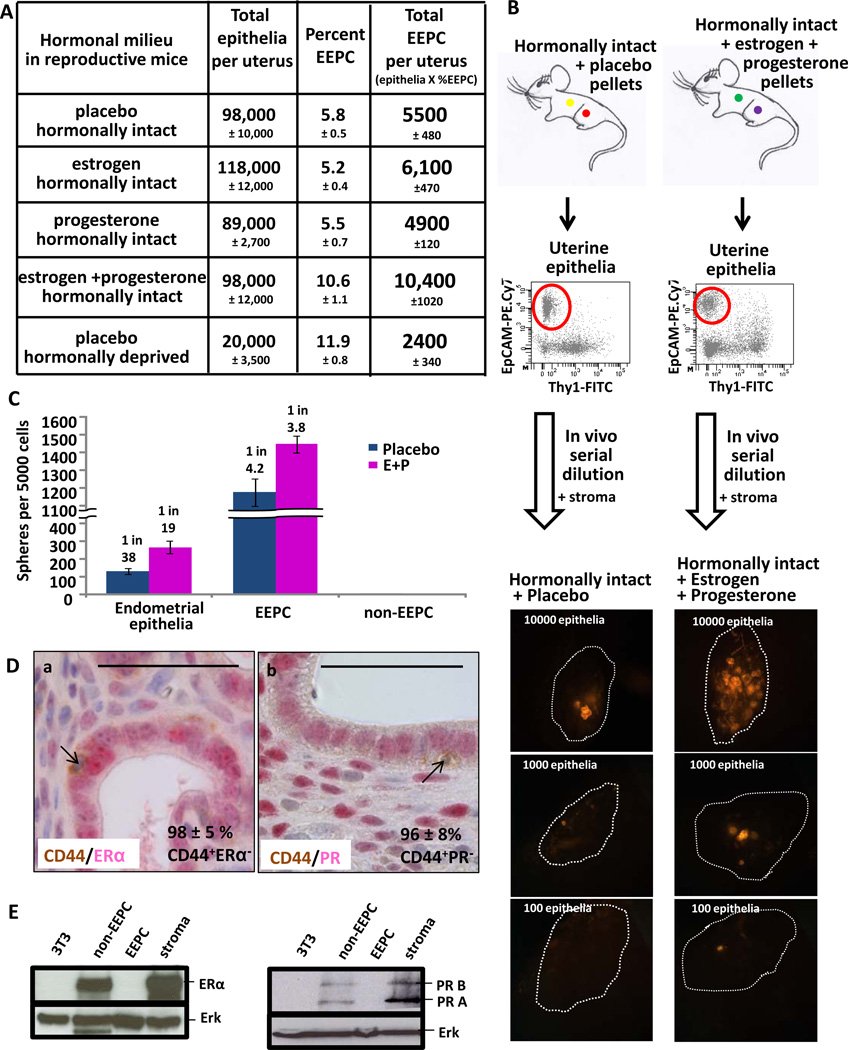Figure 7.
Estrogen and progesterone expand EEPC through paracrine signals. (A) To measure number of EEPC in each hormonal condition, the percentage of EEPC was multiplied by total number of endometrial epithelia per uterus. Hormonal supplementation with estrogen or progesterone alone did not significantly alter the number of EEPC. In contrast, when estrogen and progesterone were co-administered, the number of EEPC increased 2-fold compared to placebo treated controls. Hormonal deprivation yielded a 2-fold drop in total number of EEPC but a relative increase in the percentage of EEPC due to massive loss of many differentiated endometrial epithelia. (B) Endometrial epithelia isolated from estrogen and progesterone co-treated mice had an enhanced regenerative potential compared to placebo treated controls based on a serial dilution growth assay in vivo. Regeneration in this assay was scored as the presence of red fluorescent protein positive glandular structures. (C) A 2-fold increase in the in vitro growth potential of total endometrial epithelium was noted upon co-treatment with estrogen and progesterone. The growth of EEPC was equivalent in both hormonal conditions. The non-EEPC rarely grew in this assay. Findings suggest that the increased growth capacity of estrogen and progesterone treated endometrial epithelia is due to an increase in the number of EEPC and not due to qualitative differences in the epithelial progenitors. (D) Majority of basal CD44 positive (brown) cells detected in the endometrium were ERα (a) and PR (b) negative. (E) Western blot analysis demonstrated that EEPC do not express ERα or PRA or PRB at the protein level. Scale bars equal 50 µm and results are mean ± SD. Abbreviations: EEPC, endometrial epithelial progenitor cell; ERK, extracellular signal-regulated kinase; ERα, estrogen receptor alpha; FITC, fluorescein isothiocyanate; and PR, progesterone receptor.

